-
 © Renault
© Renault -
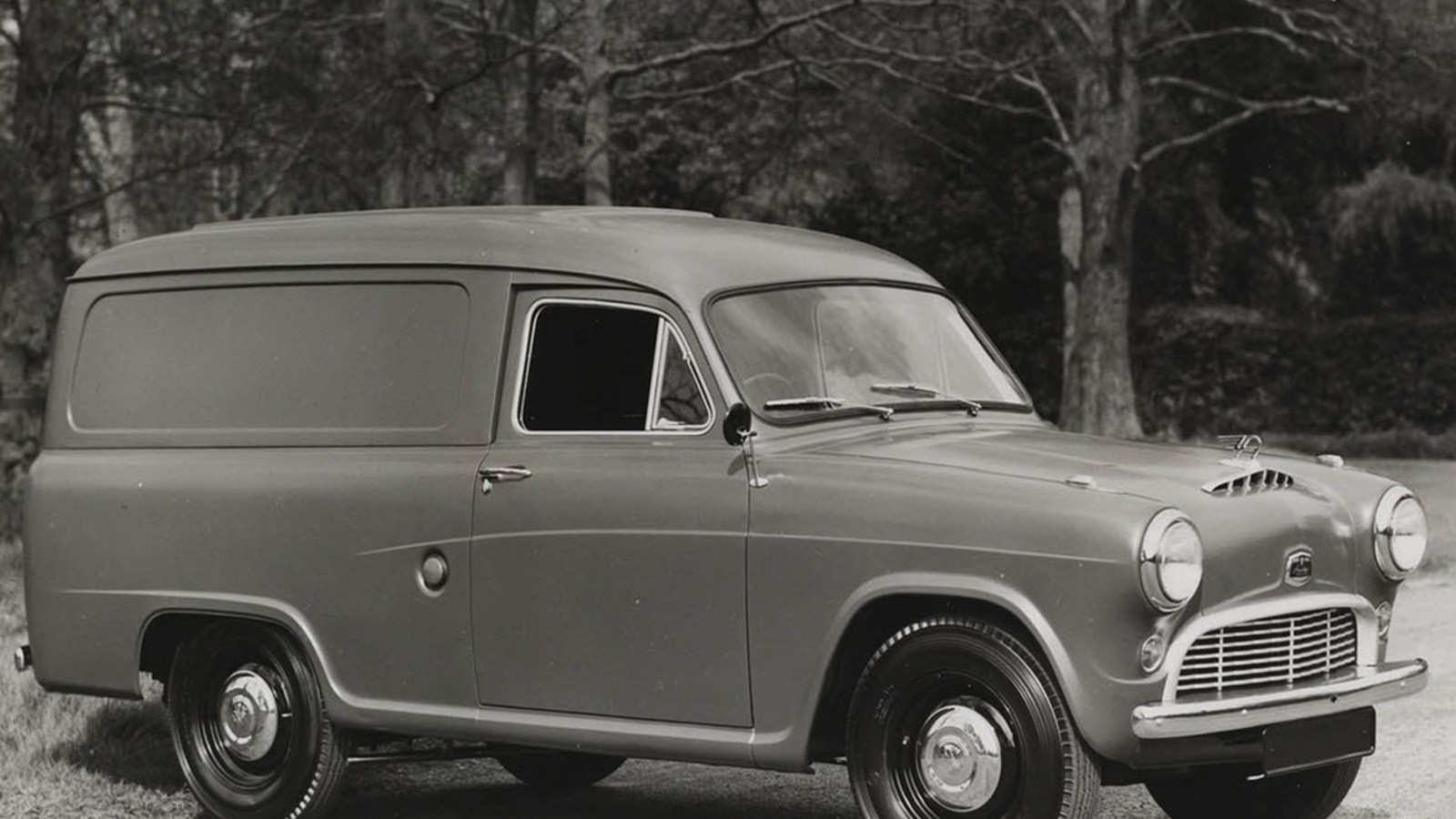 © British Motor Corporation
© British Motor Corporation -
 © Brightwells
© Brightwells -
 © Max Edleston/Classic & Sports Car
© Max Edleston/Classic & Sports Car -
 © Max Edleston/Classic & Sports Car
© Max Edleston/Classic & Sports Car -
 © H&H Classics
© H&H Classics -
 © Kit Master/Creative Commons licence https://creativecommons.org/licenses/by/2.0/deed.en
© Kit Master/Creative Commons licence https://creativecommons.org/licenses/by/2.0/deed.en -
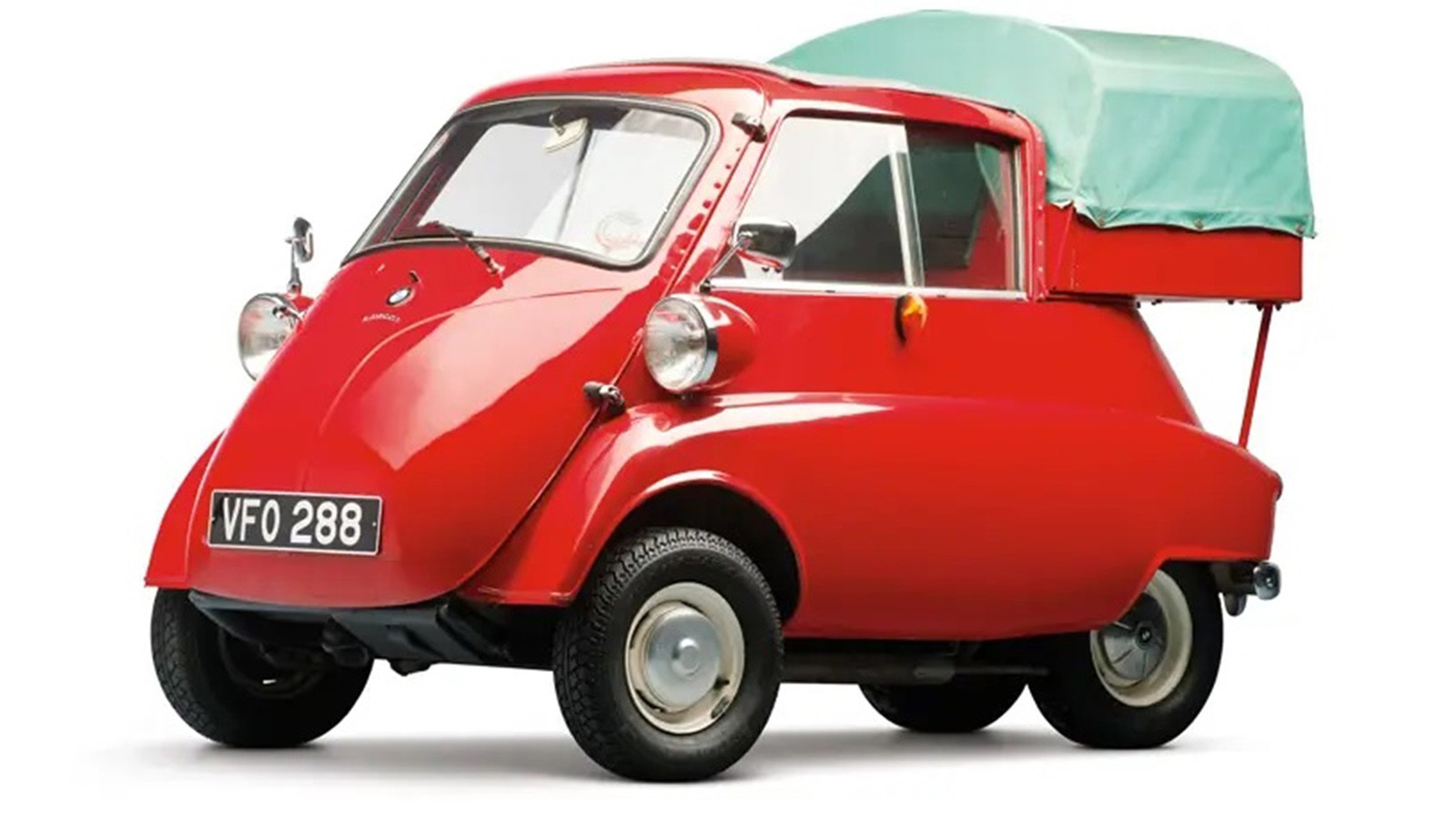 © Darin Schnabel/RM Sotheby’s
© Darin Schnabel/RM Sotheby’s -
 © Malcoma/Creative Commons licence https://creativecommons.org/licenses/by-sa/3.0/
© Malcoma/Creative Commons licence https://creativecommons.org/licenses/by-sa/3.0/ -
 © GM Heritage Archive
© GM Heritage Archive -
 © GM Heritage Archive
© GM Heritage Archive -
 © Citroën
© Citroën -
 © Andreboeni/Creative Commons licence https://creativecommons.org/licenses/by/2.0/
© Andreboeni/Creative Commons licence https://creativecommons.org/licenses/by/2.0/ -
 © Larissa Milne/Classic & Sports Car
© Larissa Milne/Classic & Sports Car -
 © GM Heritage Archive
© GM Heritage Archive -
 © Stellantis
© Stellantis -
 © Ford Motor Company
© Ford Motor Company -
 © Morse Classics
© Morse Classics -
 © Allen Watkin/Creative Commons licence https://creativecommons.org/licenses/by-sa/2.0/
© Allen Watkin/Creative Commons licence https://creativecommons.org/licenses/by-sa/2.0/ -
 © Charles01/Wikimedia Commons/Public domain
© Charles01/Wikimedia Commons/Public domain -
 © GM Heritage Archive
© GM Heritage Archive -
 © Helena/Creative Commons licence https://creativecommons.org/licenses/by-sa/2.0/deed.en
© Helena/Creative Commons licence https://creativecommons.org/licenses/by-sa/2.0/deed.en -
 © Diana Varga/RM Sotheby’s
© Diana Varga/RM Sotheby’s -
 © British Motor Corporation
© British Motor Corporation -
 © Historics
© Historics -
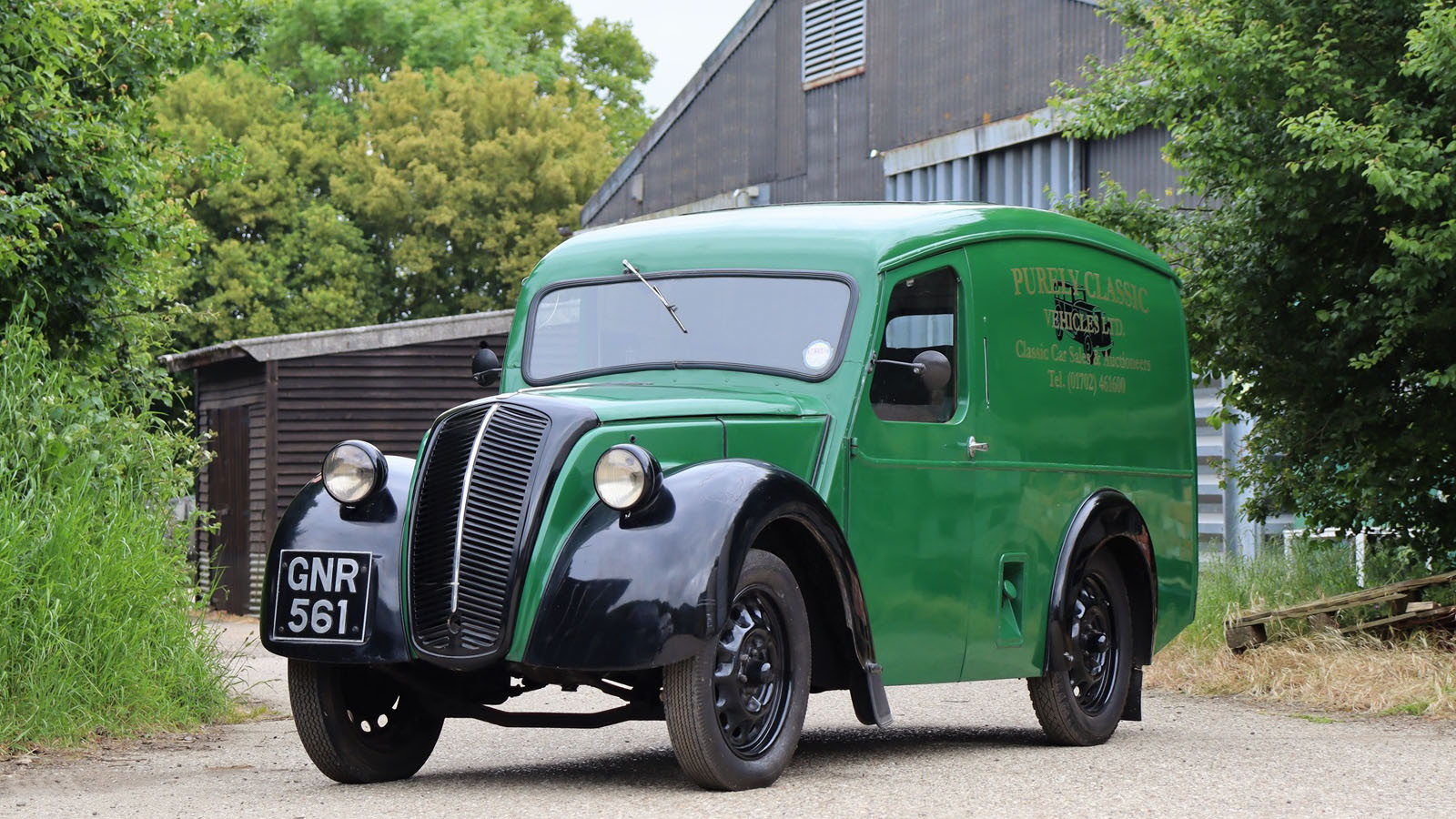 © H&H Classics
© H&H Classics -
 © Brightwells
© Brightwells -
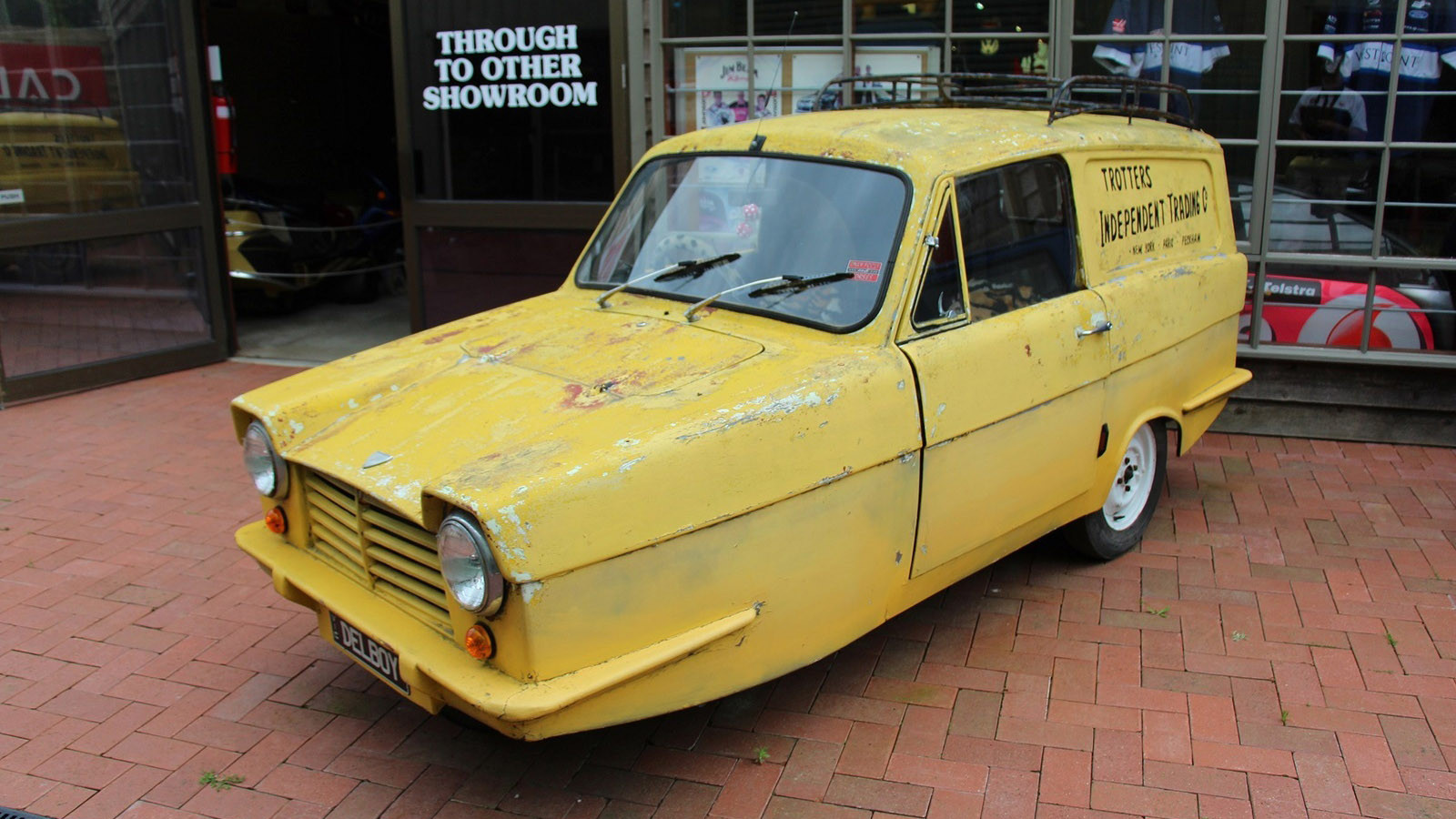 © Sicnag/Creative Commons licence https://creativecommons.org/licenses/by/2.0/deed.en
© Sicnag/Creative Commons licence https://creativecommons.org/licenses/by/2.0/deed.en -
 © Renault
© Renault -
 © Subaru
© Subaru -
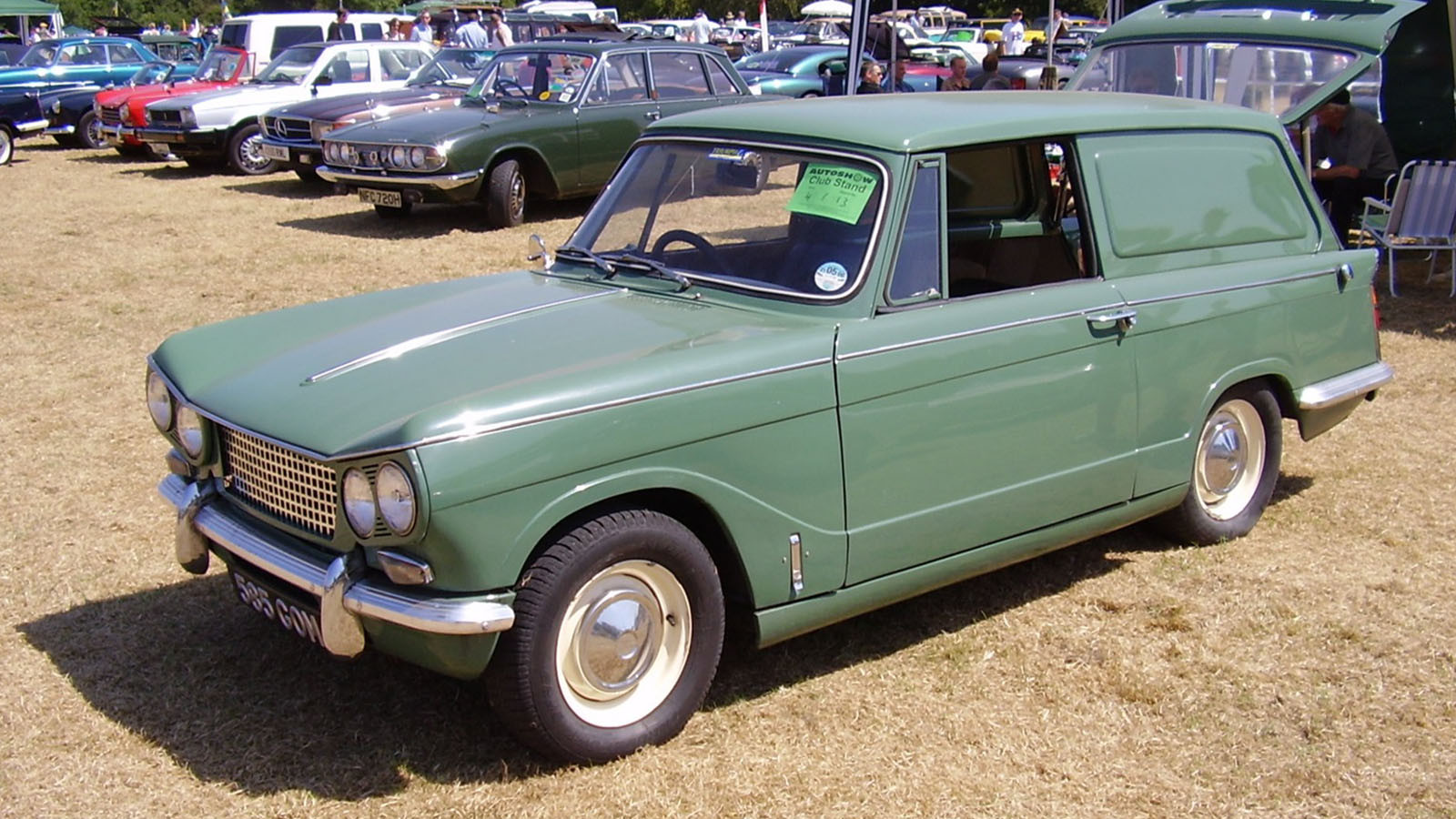 © Breton Banquet/Public domain
© Breton Banquet/Public domain -
 © GM Heritage Archive
© GM Heritage Archive -
 © Volkswagen
© Volkswagen
-
Classics that work for a living
Plenty of classic cars have been transformed from passenger vehicles into vans or pick-up trucks over the years.
Many have become much-loved workhorses like the Mini Van and Citroën 2CV Fourgonnette, while others are fleetingly rare.
A great many car-based vans have come from the most popular models of their time, from Austin Seven to Ford Escort, yet others have surprisingly distinguished roots.
Here, we take a look at many of the cars that have been converted into commercial vehicles with varying degrees of success. The list is arranged in alphabetical order.
-
1. Austin ½ Ton
The name might be unfamiliar to many, but the Austin ½ Ton was an A55 Cambridge turned into a commercial model.
In line with the upgrades for the A55 that brought a marginally more powerful engine and styling changes, the ½ Ton had the same mechanical specification with a 1.5-liter B-series engine.
Shortly after the van model arrived in February 1957, Austin added a ½ Ton pick-up model that proved popular in Australia.
Further updates arrived in 1962 with a larger 1622cc engine and innovations such as a glovebox with a lid and seatbelt anchor points.
This model remained in production until 1973.
-
2. Austin A30
Given how well the Austin A30 van sold, it seems strange now that it took the company three years from the launch of the sedan before it added the commercial variant.
Using the same body as the Countryman station wagon, the A30 van was very much the baby of the load-carting side of Austin’s range.
A simple side-hinged rear door provided good access, while the A30 made the most of its interior space by only having a driver’s seat – if you wanted one for a passenger, you had to pay extra.
An 803cc A-series engine was used in the A30, which was replaced by 848cc and 948cc engines, and a 1098cc unit for the A35 Van.
The A35 was also available as a tiny pick-up version that could be fitted with a pair of rear-facing seats to carry extra passengers.
-
3. Austin Maestro Van
The Austin Maestro was once the backbone of many company van fleets and it sold strongly right from its launch at the 1984 motor show in London.
It was the only alternative body style for the Maestro, because the company didn’t make a station-wagon version – this would have been hindered by only having two passenger doors.
The Van had no such concerns and could carry up to 700KG (1543LB) if you opted for the heavier-duty model.
Two gasoline engines were offered, in 1.3- and 1.6-liter sizes, as well as a 2-liter Perkins diesel engine that was slow but economical.
The Maestro Van also served as a disguised mule for the new Land Rover Freelander during its pre-launch testing phase.
-
4. Austin Seven Type B
Austin didn’t waste any time in exploiting the potential of its new small car when it introduced a van version of the Seven in 1923.
The Type B Delivery Van was based on the same chassis as the Chummy and came with the 747cc engine that had taken over from the early 696cc unit.
A tall load area made the most of the Austin Seven’s carrying capacity and it could haul up to 280LB (127KG). This made it ideal for light delivery duties for businesses such as grocery stores and butchers.
All Delivery Vans came with black-painted fenders, headlights, wheels and radiator. The aluminum-paneled body was supplied in primer ready for the customer to have it painted in their chosen livery, though Austin would also paint the body in one of its standard colors at extra cost.
-
5. Bedford Chevanne
Hot on the heels of Vauxhall’s Chevette and its Opel Kadett cousin, the Chevanne arrived as a panel-van derivative in 1976.
The Chevanne was meant to take over from the long-serving Bedford HA van, yet the HA soldiered on until 1983.
The Chevanne lasted only another year before being replaced by the Astravan in 1984.
With a modest 53HP from its 1256cc engine, the Chevanne was not brisk, but it did give a much more car-like cabin than most rivals’ sparse interiors.
The Chevanne was also a useful load carrier thanks to its large, flat cargo bed.
-
6. Bedford HA
Using the first Vauxhall Viva as its starting point, General Motor’s UK-based, commercial-vehicle arm came up with the Bedford HA.
Unusually, the van came first and gave rise to the Bedford Beagle (a handful were badged Vauxhalls), a station-wagon model that used the same body as the van.
From its official unveiling in late 1963, the HA quickly went on to seize a large chunk of the light-commercial vehicle market in the UK, and in Australia as the Bedford Handi-Van.
Bedford offered a higher-spec version with a 8cwt (896LB/406KG) that also came with added chrome trim and a parcel shelf beneath the dash.
By the time the HA went off sale in 1963, it had sold 689,512 units.
-
7. BMW Isetta 300
During its many places of manufacture, the Isetta was turned into a tiny commercial vehicle while being built in the UK.
Constructed in Brighton, on the south coast, the Isetta was a pint-sized pick-up that had more to do with getting round tax regulations than delivery rounds.
Two people could fit in this Isetta and it still came with a fold-back canvas roof.
The tiny load bed was limited by a 165LB (75KG) capacity, but the Royal Air Force ordered several to use for ferrying munitions around airfields.
The RAC also used them in place of motorbikes for its breakdown fleet.
-
8. Bond Ranger
The Bond Minicar was far from the most obvious starting point for a commercial model, but that didn’t stop the company coming up with the Minitruck.
The Minitruck was rather crudely fashioned from the Minicar, while the first Ranger was a slightly more integrated take on the theme.
Bond then offered a much more convincing Ranger from 1962, but it was in 1966 the van became a practical work vehicle when it gained Hillman Imp mechanics from the Bond 875.
The main appeal of the Ranger was its gas mileage, claimed to be more than 70mpg.
-
9. Chevrolet Corvair 95
Taking the same radical approach as the Corvair passenger-car range, Chevrolet launched the 95 commercial-vehicle line-up in 1961.
The Corvair 95, which was also known as the Corvan, used the same platform as the sedan with its rear-mounted, air-cooled engine similar to the Volkswagen Type 2 layout.
Customers could have a panel van or a pick-up, with the latter also offered with a ‘Rampside’ drop-down opening on the side to ease access to the cargo bed. A van with windows was another option and known as the Greenbrier.
With its forward-control cab design, the Corvair 95 did its best to maximize load space, but the stepped floor because of the rear-mounted engine hampered practicality next to rivals from Ford and VW.
-
10. Chevrolet El Camino
The Ford Ranchero had set the template for a sedan-based utility in the USA in 1957, but it was the Chevrolet El Camino of 1959 that caught the public’s imagination.
Mixing sleek sedan looks with a long cargo bed, the El Camino was ideal for anyone who needed to carry supplies and didn’t want to get their station wagon messy.
The El Camino was also Chevrolet’s first pick-up model to come with a steel load bed rather than using wooden slats.
Much of the El Camino’s appeal lay in its big V8 engines and the performance they offered, which culminated in a 454cu in (7.4-liter) model in 1970. It could cover the quarter-mile in 13 secs.
-
11. Citroën 2CV Fourgonnette
Combining the shed-like utility of Citroën’s H Van and the low-cost 2CV, the Fourgonnette was a very basic commercial vehicle.
Like the H Van, the Fourgonnette proved remarkably popular in its home country and updates mirrored those for the 2CV, with an increase in engine size to 602cc and smoother bodywork.
Citroën also created other vans from its cars that shared the 2CV platform, which gave the world the Ami and Ami Super Service commercial models, as well as the Dyane-based Acadiane that lasted until 1987.
The Fourgonnette had ceased production in 1981.
-
12. Commer Cob
The family tree of the Commer Cob can be traced back through the 1954 Hillman Husky wagon to the Minx of 1949.
The Cob arrived in 1956 as a van version of the Husky, and was very able but expensive next to its main rivals from Austin and Ford.
Commer stuck with the venerable 1265cc engine for the Cob and initially it supplied only the driver’s seat as standard. That was changed to include a passenger chair in 1957.
An all-new Series II Cob arrived in 1960, based on the Audax generation of Hillman Minx, which brought a welcome upgrade to a 1390cc engine.
The Cob stayed on sale in this form until production ended in 1965.
-
13. Commer Imp
Hillman had recycled the Husky name to create a station-wagon version of its innovative Imp in 1967, but before that there was already the Commer Imp van.
Introduced in 1965, the Commer Imp grafted a large box-like rear on to the Imp sedan to give a useful 50cu ft (1415 liters) of load room.
Despite the Imp’s rear-mounted engine, which was canted over, the Commer had a flat cargo bed.
There was even an extra storage space behind the two seats to make the Imp a much more useful small van than its Mini rival.
-
14. Dodge Rampage
Chrysler’s L-body cars were hardly the most inspiring place to start for any new model, but the Rampage managed to add a dash of style while also delivering the goods as a compact pick-up.
The whole of the Dodge Rampage’s front end was shared with the Omni 024, which was itself derived from the Plymouth Horizon, known as the Talbot Horizon in the UK.
A 2.2-liter engine with 86HP was originally used in the Rampage and there was a 101HP version later on.
This was enough to haul loads of up to 1145LB (520KG), so the Rampage could be sold as a ½ ton pick-up in the US.
Production lasted from 1982 to 1984 for the Rampage and 37,401 were sold, plus a further 3564 of the same car badged as a Plymouth Scamp.
-
15. Fiat Fiorino
Take the Fiat 127 hatchback and plonk a large box on the back, and you have the Fiorino.
While the styling might have seemed crude, the result was a lot of space in a small van and it contributed a good deal to a production total of almost 8 million Fiat 127 variants.
Changes for the Fiorino stayed in line with those for the Fiat 127 hatchback, so there was a new 1.3-liter engine in 1981 and the option of a diesel.
Left-hand-drive markets received an improved Fiorino in 1982, but right-hand-drive countries continued with the older version.
All Fiorinos had the option of a plastic roof-rack over the cab for added carrying capacity, plus it doubled as a wind breaker to direct air over the raised load bay’s roof.
-
16. Ford Escort
Only three months after it launched the Escort sedan in January 1968, Ford introduced the Escort Van in April.
Clearly based on the Escort Estate, as the station wagon was called in the UK, the Van could also be ordered with a high-roof option to add more carrying capacity.
Even the base Escort Van could haul 371KG (818LB) with the low-compression, 1.1-liter engine. The more powerful 1.3-liter motor could up that to 493KG (1087LB).
Ford continued to offer low-compression versions of the engines when it replaced the Mk1 Escort Van with the Mk2 to allow for two-star fuel.
The Mk2 Escort was the same as the Mk1 from the windshield pillars back, with only the front end updated with the new model’s panelwork.
Ford carried on building Escort vans through every generation of the model.
-
17. Ford Model Y
An early adopter of car-based commercial models, Ford offered its Model Y sedan as a van or pick-up.
The squared-off rear end of the van made it a handy, small, delivery vehicle, though Ford had to remove the front bumper to keep weight down in late 1933 so the van stayed within a more affordable tax bracket.
Classed as a 5cwt (560lb/254kg), the Model Y sold well and it found 28,606 customers between 1932 and 1937.
Some were converted to pick-ups and others into ‘woodie’ wagons.
There was also a three-wheeled Tug conversion approved by Ford and produced by County Commercial Cars in Hampshire as a tractor unit to pull trailers in confined spaces.
-
18. Ford Thames 300E
Ford is one of the masters of turning its passenger-car range into light-commercial vehicles, and the Thames 300E did just that with the Anglia/Prefect line-up.
The Thames 300E used the same basic bodyshell as the Escort and Squire station-wagon models, but with a stripped-out rear and no passenger seat, the 300E could offer 66.5cu ft (1883 liters) of carrying capacity.
In a bid to maximize load space, the Thames 300E did without a passenger seat as standard. In its place, Ford fitted the spare wheel into the front floor, though this then moved into the cargo bay’s sidewall if a second seat was specified.
Ford’s tried and tested 1172cc engine powered the 300E. It was used in all 196,885 Thames 300Es built.
-
19. Ford Thames 307E
In line with creating a van from its existing, small-car offering, Ford came up with the Thames 307E that used the new-for-1959 Anglia as its base.
The only surprise with the Thames was it took Ford until 1961 to launch the van model.
However, it was an instant hit when it went on sale and more than 200,000 were sold during its lifetime that came to an end in late 1967.
Ford sold 5cwt and 7cwt (254KG/560LB and 355KG/783LB) models, with the latter distinguished by its chrome bumpers and peaks over the headlights.
The 7cwt also had a chrome grille where the lower-capacity version made do with a painted one.
Ford offered the 307E with a 1-liter engine, while the 309E came with the larger 1198cc engine borrowed from the Anglia Super.
-
20. Holden Coupe Utility
Holden launched its first home-grown car, the 48-215 sedan, in 1948, and this was followed by the Coupe Utility at the start of 1951.
The ‘coupe’ in the name refers to the two-door enclosed cab rather than any notions of a fastback sports car.
As for ‘utility’, this model more than lived up to that with its generous load bay and easy access through the drop-down tail section.
The 2.1-liter six-cylinder engine provided easy performance and good gas mileage, which resulted in an order book of 70,000 for the Coupe Utility in its first year on sale.
The Coupe Utility lived on through five generations, and then its spiritual successor based on the Commodore right up until 2017.
-
21. Jowett Bradford
In the immediate aftermath of the Second World War, Jowett revised its flat-twin engine for the Bradford. It was launched as a van to begin with, followed by the wagon model a year later.
Jowett made the most of its limited resources by also offering the Bradford in Utility trim that had side windows and rear seats but little else.
There was also a marginally more opulent De Luxe model, or you could have the Four Light that was a van with windows but no rear seats to sidestep the tax on passenger cars.
A Truck model was also part of the range as a pick-up, and it all helped towards the Bradford being Jowett’s best-selling model with sales of 40,995 altogether.
-
22. Lancia Ardea
Lancia is best known for its superbly engineered sedans and sporting models, but the pre-war Ardea sedan was also developed into small commercial models.
These were called the Furgoncini, which translates as ‘small van’, and Camioncini ‘small pick-up’, and around 8500 of both were produced.
Even though there were utilitarian models, Lancia still included the same updates as the Ardea sedan enjoyed.
This meant the addition of a five-speed manual gearbox in 1949 and a more powerful engine.
Production of the Ardea Furgoncini and Camioncini lasted from 1948 to 1954.
-
23. Mini
Just as with the Mini sedan, there were Austin and Morris versions of the Mini Van.
It was based on the same 4in (62mm) stretched floorpan as the Countryman/Traveller station-wagon models, which freed up 46cu ft (1302 liters) of cargo space.
Just as important as its load capacity was the price of the Mini Van of £360 when it was launched in 1960.
This made it one of the cheapest four-wheeled cars you could buy, and it was definitely the most desirable thanks to its cheeky looks and excellent handling.
BMC (British Motor Corporation) went on to offer a pick-up version as well, and sales of the Mini Van totaled 521,494 by the time it went off sale in 1983.
-
24. Morris Minor
The Morris Minor leant itself very well to being turned into a commercial vehicle, especially because Morris waited to do so until the Series II Minor was introduced.
Van versions of the Minor first appeared in 1953 with the raised headlight style of the Series II. This also meant the van and pick-up models benefited from the A-series engine under the hood.
Many Minor vans were bought by the Post Office in the UK and the early cars had rubber front fenders to fend off minor knocks.
These fenders also necessitated headlights that perched on the fender rather than being incorporated into it.
-
25. Morris Series Z
Taking the styling of the Morris Series sedan gave the Series Z van a surprising dash of style.
It arrived in 1940, with many being pressed into military service during the war years.
While the Series Z had the look of the Series E, the van used the engine from the earlier Series II Morris Eight sedan.
It might have meant slow going on the performance front, but it did make the Series Z very reliable. The three-speed gearbox was also robust enough for dealing with a fully loaded van.
A coupe utility pick-up version was made for Australian buyers, and the Series Z notched up an impressive 51,000 sales.
-
26. Peugeot 205
By the mid-1980s, most major auto makers had a small hatchback-based van in their line-up, and one of the most fun was the Peugeot 205.
With all the handling ability of the stock 205 hatch, the van was even lighter because everything behind the front seats was stripped out to make as much room as possible for cargo.
The front cabin wasn’t much more luxurious, because it was based on the lowest trim model of the hatchback range.
A 1.8-liter diesel engine did the honors under the hood and, while far from fast, it allowed the 205 van to make quick progress thanks to its strong low- and mid-rev pull.
-
27. Reliant Regal
Even by the standards of 1952, there wasn’t much modern about the Reliant Regal when it went on sale.
Aside from its fiberglass body, the tiny van came with an Austin Seven engine and just three wheels, with one at the front and two at the back.
While it was very basic, the Regal worked as a commercial vehicle thanks to its completely flat load floor that sat flush with the load lip. There were also two side-hinged doors for superb access.
The Regal was greatly improved in 1962 with Reliant’s own engine, and the Regal went on to find enduring fame as the chosen transport of Del Boy in the British television series Only Fools and Horses.
-
28. Renault 4 Fourgonnette
Just as Citroën had done with the 2CV, Renault created its own Fourgonnette van version of the R4. This was made much easier thanks to the R4’s separate chassis and front-wheel-drive design.
A runaway success in its homeland, the R4 was also popular across Europe and South America, and more than two million R4 Fourgonnettes were sold.
The Fourgonnette could carry up to 300KG (661LB), and there was a longer version called the F6 that could cope with up to 600KG (1323LB).
The R4 was nicknamed Girafon, the French for giraffe, because of the lift-up panel at the back of the roof to allow tall items (like a giraffe’s neck… ) to poke through.
-
29. Subaru BRAT
More people possibly know the Subaru BRAT as a radio-controlled model car made by Tamiya.
However, the real thing was an amazingly able, versatile pick-up derived from Subaru’s Leone station-wagon model and launched in 1978.
The BRAT name came from the acronym Bi-drive Recreational All-terrain Transporter, which was a long-winded way of pitching this pick-up as a lifestyle vehicle as much as a workhorse.
However, it was on farms and estates where the BRAT earned its stripes, as all-wheel drive and its light weight allowed it to scamper where most pick-ups got stuck.
The BRAT was updated in line with the second-generation Leone in 1981 and the pick-up was eventually offered with a turbocharged engine.
Around 100,000 BRATS were produced, yet none were ever officially sold in its homeland of Japan.
-
30. Triumph Courier
The Triumph Herald Estate (as it was called in its home market) very nearly became the Standard Herald Van, but there was a fear the Standard name conjured images of hair-shirt economy.
Triumph it was, then, and the Courier made for a stylish 5cwt (305KG/672LB) commercial vehicle that could carry up to 45cu ft (1274 liters) of goods.
With a large lift-up tailgate, access to the Triumph Courier’s load space was good, while the front cabin shared the same wooden dashboard and accoutrements as the sedan.
Courier sales ended in 1964 and all models used the 12/60 sedan’s 1147cc engine, plus they had the same superbly compact 25ft (7.6m) turning circle that made the Courier ideal for town work.
-
31. Vauxhall Astravan
Often only half-jokingly referred to as the fastest vehicle on the planet, the Vauxhall Astravan and its Opel Kadett Euro cousin were one of the most popular small vans for good reason.
It started life in 1981 as the Bedford Astravan and used the same sharply styled body as the two-door Astra wagon. Unlike the Chevanne it was made to replace, the Astravan was front-wheel drive.
In 1990, the Bedford name was dropped and it became a Vauxhall model in the UK, while still being sold as an Opel in Europe.
This was just in time for the third-generation model to arrive, and the Astravan continued across six generations until production came to a halt in 2012.
-
32. Volkswagen Caddy
If you only look at the front half of the Volkswagen Caddy, it’s a Mk1 Golf, pure and simple.
Glance further back and you find a long pick-up bed that made this a very handy and big-selling commercial variant.
Also known as the Rabbit Pick-Up in the USA, the Caddy came with a choice of 1.5-, 1.6-, 1.7- and 1.8-liter gasoline engines, depending on the market, and a workmanlike 1.6 diesel.
The Caddy name was also applied to a Polo-based van in 1996, but it’s the original that lasted the longest.
Launched in 1979, it only went off sale in Europe in 1995, but it continued on in production in South Africa until 2007.
